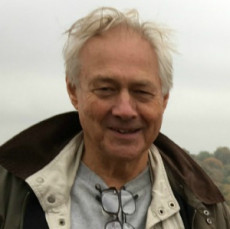Srebrenica, July 30: The story of the Srebrenica massacre has been told many times, including on the website of the Advocacy Project. Beba Hadzic was among those Muslims expelled in the first days of the war, in April 1992. The Muslims who remained in Srebrenica then regrouped and pushed the Serbs back. For the next three years the town became the main refuge for Muslims who were cleansed in Eastern Bosnia.
The pocket collapsed in July 1995. Some 7,000 tried to escape across the mountains to Tuzla, but were cut to shreds in the woods among horrific scenes. The remaining, numbering over 30,000, were ordered down the road to Potocari at the foot of the hill, to the old battery factory which served as the base of the UN Dutch Battalion.
Scene of Infamy: the battery factory a Poticari has been turned into a museum
Men and boys over 15 were separated from the women and killed all the way down the road to Bratunac and beyond. The rest were bussed to Tuzla. General Ratko Mladic supervised the early operation, sweating and puffy-faced.
I first visited Srebrenica in 1997 after serving as an OSCE election observer in Vlasenica, and again in 2000 elections. My polling station was a former milk factory which lay on what had been the front lines at Potocari. We used to look out over the Battery Factory through a shell blast in the back wall.
At this stage – five years after the end of the war – there were no Muslims in the town. I remember watching Serbs from the town, many of whom had certainly been involved in the killing, meticulously counting ballots (all of which had been cast by Serbs). This coincided with the Florida show-down between Bush and Gore, and the Serbs shook their heads as they listen to the tales of hanging chads on the radio. “America does not get democracy” observed one.
Back then, there was also no memorial at Potocari. As Peter Lippman wrote in his early diaries for the Advocacy Project, the first stone plaque was broken up by Serbs, and it was not until April 2003 that the first reburials took place.
Today the place is the scene of a large elegant memorial center, and massive cemetery. Every year on the anniversary of the massacre, relatives and sympathizers gather here to rebury the remains of those identified during the previous year. The crowds have grown steadily since 2003, and the Potocari site is fast assuming the sort of global recognition afforded to other notorious memorials, like the former Khmer Rouge prison, Tuol Sileng; Auschwitz; the Rwandan church of Ntarama, where the bones of genocide victims still cover the pews and altar; or the Navy Mechanics School in Buenos Aires, where 5,000 disappeared Argentinians were tortured and killed in the 1970s.
At Poticari, newly-buried graves are marked by a green wooden headpiece, a number and name. The name is removed after a year, and after two years the headpiece is replaced by a slender marble gravestone. The symmetry of the cemetery is broken where spaces have been left for relatives that have yet to be identified. Beba’s brother in law was reburied here last year. Two empty plots are reserved for his brother and son.
I find it interesting that Srebrenica has grown in importance as a symbol, as evidenced by the number who attended this year’s commemoration. This is partly explained by guilt that the world let the massacre take place at all; partly by the awful nature of the massacre, which seemed almost inconceivable in this day and age and partly by the fact that the two main authors – Mladic and Karadzic – have remained at large for so long. The fascination of Srebrenica is explained by impunity as much as the act itself.
This will continue as long as Mladic remains at large, and Karadzic’s trial will also keep the spotlight on Srebrenica. Eventually, however, the intensity of the fascination will fade, as it has with the other outrages mentioned above.
Not, however, for the relatives. As long as victims remain unidentified, their relatives will continue to grieve. As we stroll among the graves, Beba reminds me that until a victim has been identified he is “missing” and his relatives remain in an emotional limbo.
People in this fragile state can break down at any time, and it is not uncommon for weavers at Bosfam to start weeping uncontrollably. With over 5,000 Srebrenica victims still to be identified, this tragedy has many years to run.
Posted By Iain Guest
Posted Jul 30th, 2008

